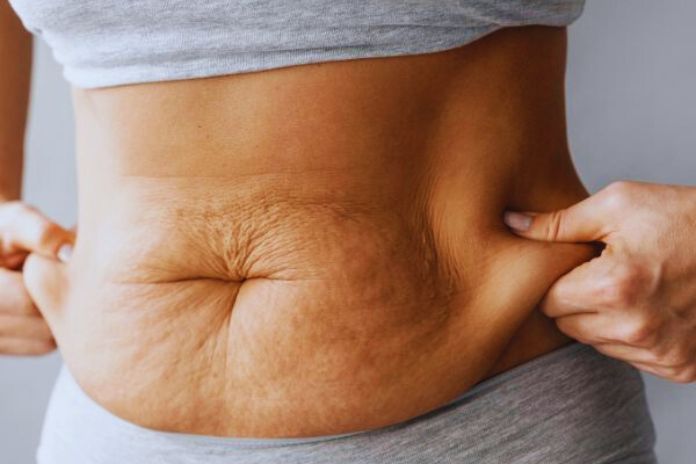Find out what cellulite is, what causes it, and how changes in your diet can improve your skin’s appearance.
Cellulite is the popular name for gynoid lipodystrophy, fat accumulation under the skin. It looks like the wavy aspect of the skin, like “orange peel,” in some areas of the body. It affects about 85% of women after puberty. It usually appears in the places of the body with a greater concentration of fat: that is why it is so common to have cellulite on the legs and cellulite on the belly. To an advanced degree, cellulite can cause local pain and compromise your quality of life.
What Is Cellulite?
Gynoid lipodystrophy, popularly known as cellulite, is the name given to fat accumulation under the skin. These are alterations in the structure of the deep layers of the skin, in the microcirculation of local blood, and in the fat cells of the hypodermis (deep part of the skin). It affects 85% of women over 20, and practically all will eventually have cellulite.
About 10% of women with cellulite do not know they have the disease.
Males are also affected, but less frequently due to anatomical differences in adipose tissue between genders. In men, the fat cells are smaller compared to that of women.
Cellulite formation involves changes in local blood circulation and lymphatic drainage; nutrient exchanges and oxygenation of the region are impaired in this scenario.
The lack of oxygen in the structures of the adipose tissue unbalances the ability to break down and form fat, favoring lipogenesis (a technical term that refers to the formation of fat).
The result is seen on the skin as more voluminous, wavy regions and, in some cases, appear to have “holes.” Over time, due to the lack of oxygen, nutrients, and excess fatty cells, cellulite can start to generate fibrosis – with the metabolic imbalance, collagen production is stimulated disorderly, which generates local scarring that makes the region thick, stiff, and even painful.
Degrees Of Cellulite
Not all cellulite is the same. The picture can appear in different intensities and evolve depending on the care and treatment adopted by the individual. This evolution can be towards the increase or reduction of cellulite.
It usually appears in places on the body where there is a greater accumulation of fat and sagging skin.
Grade 1
It is usually invisible to the naked eye, but the skin feels slightly rough and less elastic if the region is pressed with the hands.
Grade 2
Changes in the skin appear only with the contraction of the local musculature.
Grade 3
Changes in the skin are seen even without muscle contraction and without putting pressure on the region. There is the formation of nodules, and it can generate pain when squeezing the region.
Grade 4
The nodules become increasingly visible and more painful. There is also damage to local circulation, which generates edema (swelling) in the region, in addition to pain and a feeling of heaviness – when cellulite is on the legs, they seem heavier.
Food: An Important Ally In The Management Of Cellulite
Factors that increase your chance of developing cellulite are: female gender, heredity (presence of a family member with cellulite), hormonal changes (which is why the risk increases in adolescence), use of contraceptives (estrogen is the main hormone involved), and diet with excess foods that increase blood glucose, as the elevation of the level of glucose (sugar) in the blood, stimulates the production of insulin.
Insulin is a hormone that increases the production of fatty cells and favors water retention.
Another important risk factor is a sedentary lifestyle, as in addition to contributing to the reduction of muscle mass, with a consequent increase in body fat, the lack of muscles in the leg region hinders local circulation and can predispose to the appearance of cellulite.
How Food Can Help In The Treatment Of Cellulite:
Antioxidant foods: free radicals are mainly responsible for cell aging and contribute to the swelling caused by cellulite becoming more apparent and increasing over time. Fruits, vegetables, and greens are excellent sources of antioxidants and have no contraindications for you to include them in your daily life.
Hydration: staying well hydrated is essential to keep our body functioning; the transport of nutrients and oxygenation of our organs (such as the skin) and tissues are favored.
Avoid foods with a high glycemic index: the increase in blood glucose (blood sugar level) favors the formation of fat cells. To avoid glycemic peaks, some guidelines are important:
- Prefer whole foods (whole grain bread and rice, for example).
- Avoid the consumption of refined carbohydrates and ultra-processed foods.
- Reduce the consumption of sweets and sugars.
In case of eventual consumption, associating the intake with proteins and fibers can reduce the effect on your blood glucose.
Smoking And Cellulite
We know that cigarettes have more than 4,000 toxic substances that, when in contact with the body, can cause many diseases, including cellulite. Smoking alters blood circulation, especially microcirculation, through which the skin is nourished and receives oxygen. By worsening local blood flow, tissue oxygenation is reduced, and there is an increase in free radicals with the consequent formation of cellulite.
Alcohol And Cellulite
Alcohol promotes the accumulation of body fat by favoring lipogenesis – the formation of fat cells.
Adjusting your diet and starting regular physical exercise are essential changes in your lifestyle to prevent the appearance of cellulite, and if you already have it, these are one of the essential pillars for treatment.
Also Read: After All, What Accelerates Metabolism Healthily?

